#Edible mushrooms
Explore tagged Tumblr posts
Text
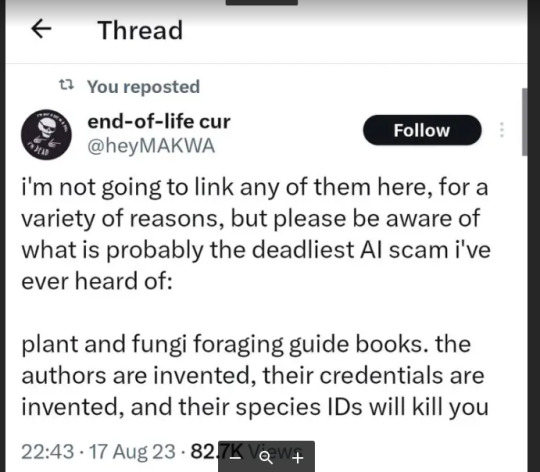
ETA: I wrote up a guide on clues that a foraging book was written by AI here!
[Original Tweet source here.]
[RANT AHEAD]
Okay, yeah. This is a very, very, very bad idea. I understand that there is a certain flavor of techbro who has ABSOLUTELY zero problem with this because "AI is the future, bro", and we're supposed to be reading their articles on how to use AI for side hustles and all that.
I get that ID apps have played into people's tendency to want quick and easy answers to everything (I'm not totally opposed to apps, but please read about how an app does not a Master Naturalist make.) But nature identification is serious stuff, ESPECIALLY when you are trying to identify whether something is safe to eat, handle, etc. You have to be absolutely, completely, 100000% sure of your ID, and then you ALSO have to absolutely verify that it is safely handled and consumed by humans.
As a foraging instructor, I cannot emphasize this enough. My classes, which are intended for a general audience, are very heavy on identification skills for this very reason. I have had (a small subsection of) students complain that I wasn't just spending 2-3 hours listing off bunches of edible plants and fungi, and honestly? They can complain all they want. I am doing MY due diligence to make very sure that the people who take my classes are prepared to go out and start identifying species and then figure out their edibility or lack thereof.
Because it isn't enough to be able to say "Oh, that's a dandelion, and I think this might be an oyster mushroom." It's also not enough to say "Well, such-and-such app says this is Queen Anne's lace and not poison hemlock." You HAVE to have incredibly keen observational skills. You HAVE to be patient enough to take thorough observations and run them through multiple forms of verification (field guides, websites, apps, other foragers/naturalists) to make sure you have a rock-solid identification. And then you ALSO have to be willing to read through multiple sources (NOT just Wikipedia) to determine whether that species is safely consumed by humans, and if so if it needs to be prepared in a particular way or if there are inedible/toxic parts that need to be removed.
AND--this phenomenon of AI-generated crapola emphasizes the fact that in addition to all of the above, you HAVE to have critical thinking skills when it comes to assessing your sources. Just because something is printed on a page doesn't mean it's true. You need to look at the quality of the information being presented. You need to look at the author's sources. You need to compare what this person is saying to other books and resources out there, and make sure there's a consensus.
You also need to look at the author themselves and make absolutely sure they are a real person. Find their website. Find their bio. Find their social media. Find any other manners in which they interact with the world, ESPECIALLY outside of the internet. Contact them. Ask questions. Don't be a jerk about it, because we're just people, but do at least make sure that a book you're interested in buying is by a real person. I guarantee you those of us who are serious about teaching this stuff and who are internet-savvy are going to make it very easy to find who we are (within reason), what we're doing, and why.
Because the OP in that Tweet is absolutely right--people are going to get seriously ill or dead if they try using AI-generated field guides. We have such a wealth of information, both on paper/pixels and in the brains of active, experienced foragers, that we can easily learn from the mistakes of people in the past who got poisoned, and avoid their fate. But it does mean that you MUST have the will and ability to be impeccably thorough in your research--and when in doubt, throw it out.
My inbox is always open. I'm easier caught via email than here, but I will answer. You can always ask me stuff about foraging, about nature identification, etc. And if there's a foraging instructor/author/etc. with a website, chances are they're also going to be more than willing to answer questions. I am happy to direct you to online groups on Facebook and elsewhere where you have a whole slew of people to compare notes with. I want people's foraging to be SAFE and FUN. And AI-generated books aren't the way to make that happen.
#foraging#mushroom foraging#plant foraging#mushrooms#edible plants#edible mushrooms#wild foods#food#nature#AI#fungus#fungi#poisonous mushrooms#poisonous plants#botany#mycology#rant
4K notes
·
View notes
Text





Cantharellus cibarius, up close and personal
#cantharellus cibarius#chanterelles#mushrooms#fungi#mushroom photography#edible mushrooms#original photography#photographers on tumblr#foraging#mycology
553 notes
·
View notes
Text
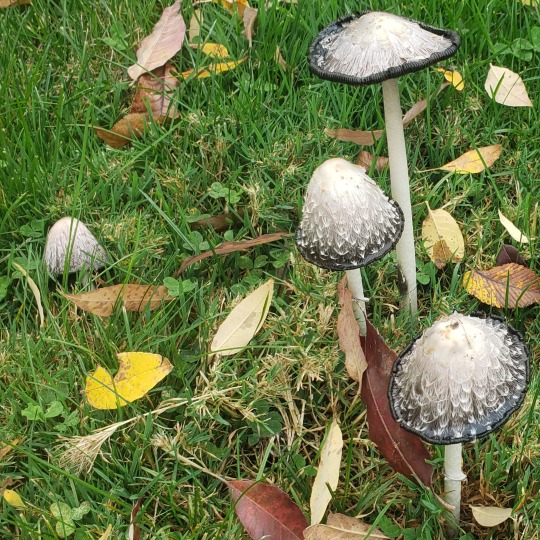
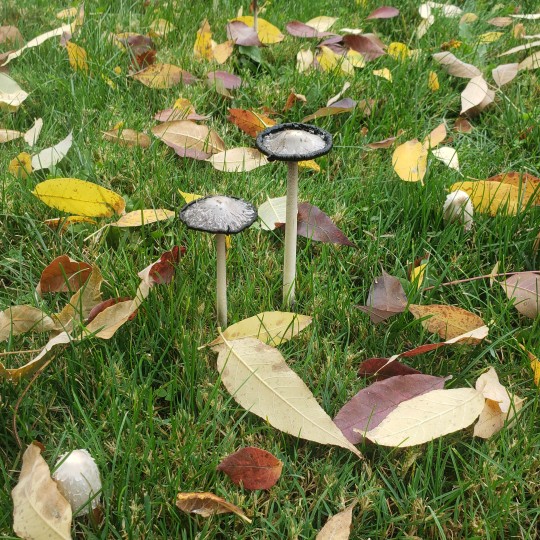
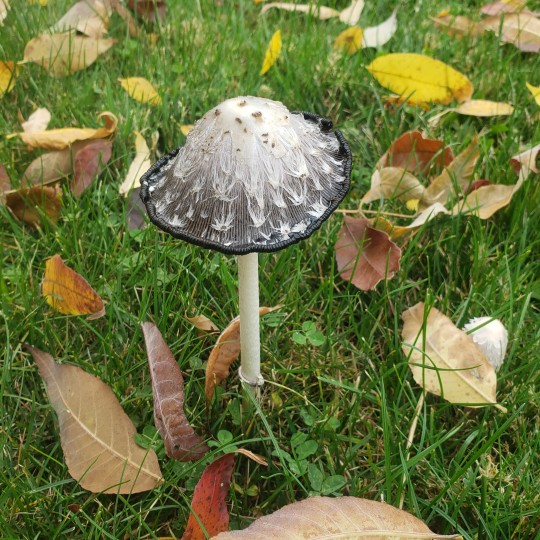
Shaggy ink caps!
#coprinus comatus#shaggy mane#mushrooms#wild fungi#fungi#mycology#nature#autumn#fall#2020#ohio#shaggy ink cap#gothic#gothic aesthetic#fall leaves#edible mushrooms#foraging#whimsigoth
185 notes
·
View notes
Text
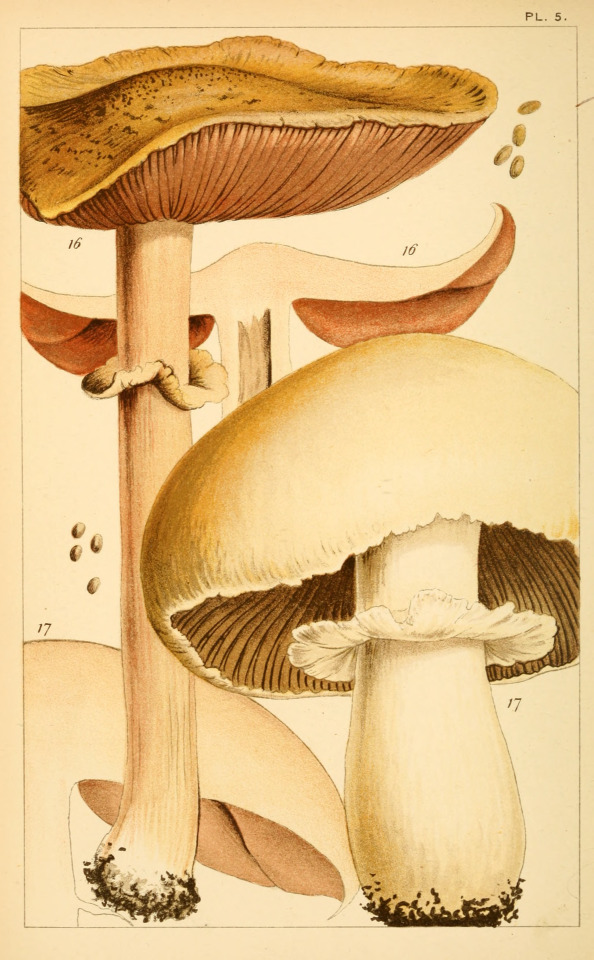
Plate 5. British edible fungi : how to distinguish and how to cook them. 1891.
Internet Archive
431 notes
·
View notes
Text

#photographers on tumblr#original photographers#nature photography#mushroom#wild fungi#fungi#edible mushrooms#forestcore#goblincore#fall foliage#autumn aesthetic#autumnal#fall season#foraging#mycology
182 notes
·
View notes
Text





It is mushroom season!
This is an excellent time to find some delicious, natural shrooms in Midwestern forests.
This is great way to become closer to nature and to rediscover the oldest type of human food acquisition (foraging). But please be very careful. There are many deadly species of fungus in the woods too.
Listed below are some of my favorites, which are common in the upper Midwest:
Left -to-Right, Top-to-bottom:
Shaggy Mane (edible)
Oyster (edible)
Giant Puffball (edible)
Chicken of the Woods (edible)
Pheasant Back or Dryad’s Saddle (edible)
#midwest#autmn#mushrooms#mushroom#mushroom picking#mushrooming#edible mushrooms#foraging#foraged food#nature photography#mushroom photography#original photography#original photographers
60 notes
·
View notes
Text
:)
Man-made horrors within my comprehension
#ai#chatbots#ai scam#ai scams#be careful out there!#foraging#mushrooms#mushroom foraging#fungi#fungi foraging#edible mushrooms#man-made horrors within my comprehension#man made horrors
454 notes
·
View notes
Text

Foraging haul from this past July. It's rained probably less than 30 days this entire summer in North Georgia, so I haven't been able to go on many mushroom forays. I'm super thankful for this haul though, we made some delicious meals with these mushrooms! Pictured in no particular order: chanterelle, american caesar, shaggy stalk bolete, cinnabar chanterelle, indigo milky cap.
leahnevershouts Shop | Redbubble
73 notes
·
View notes
Text

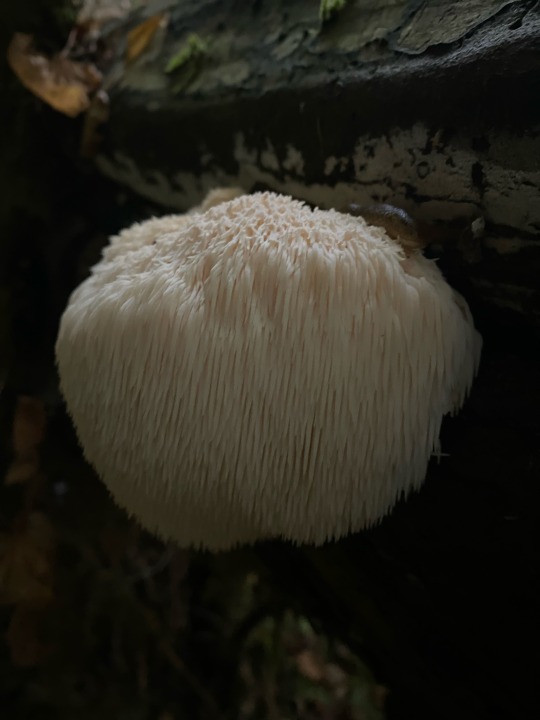
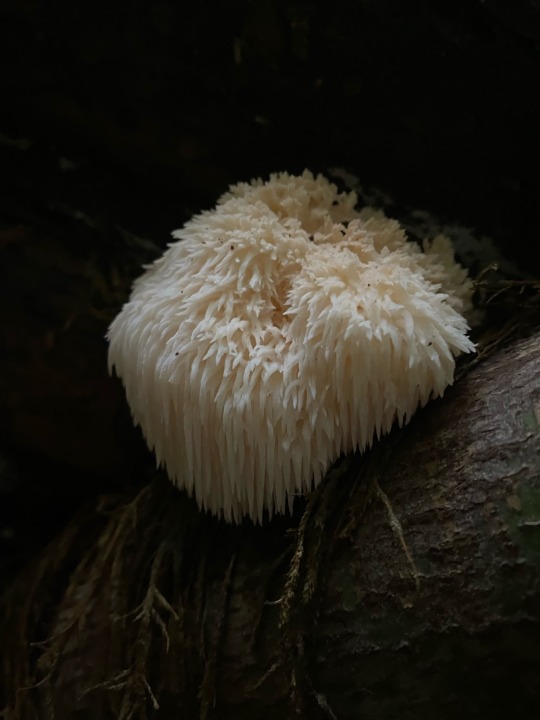
papa bear..
moma bear..
baby bear..
Hericium erinaceus..some prefer different nicknames but it reminds me of a bears head at maturity..fruiting reliably on a fallen maple log..
276 notes
·
View notes
Text
I am all for creative sushi, but not when the creator doesn't fully understand the ingredients. A sushi restaurant in Montana served people sushi with raw and very undercooked morel (Morchella spp.) mushrooms on it. Over fifty people ended up sick with gastrointestinal upset, and two people actually died. Other restaurants that served the same batch of morels, fully cooked, had no such issues, and there was no evidence that there was any mishandling of the morels that could have caused a bacterial or other contamination. So it's pretty clear that the raw morels themselves were to blame.
Yes, there are a few wild mushroom species you can eat raw, and only in small amounts). No, Morchella are not among them. Morels have a toxin in them that's neutralized by cooking; Paul Stamets theorized that it's hydrazine, but no one has been able to isolate hydrazine in a morel yet so that's not a done deal. Whatever it is, there's enough of it that it tends to give people nasty gastrointestinal upset when they eat raw morels, even in small quantities. This is the first I've heard of people dying from it.
It's not the only time I've heard of people dying from consuming a commonly-considered-edible mushroom, though. There were two separate incidents--2004 and 2009--in which several people who ate angel wing mushrooms (Pleurocybella porrigens) died of encephalopathy. Now, it did turn out that most of the people sickened had pre-existing liver and/or kidney issues. And a 2011 study identified an unstable amino acid, now named Pleurocybellaziridine, as the possible fatal factor that was found in large quantities in angel wings. It could be that the culprits were flushes of these mushrooms with abnormally high amounts of Pleurocybellaziridine. But you can't tell how much of a given metabolite a given mushroom has just by looking at it, and so that raises enough of an alarm for me personally that as a forager I just put angel wings on the "do not eat" list.
Will I continue to eat morels? Yes. The toxicity associated with raw morels has been known for a long time, and there have been no recorded issues with thoroughly cooked morels (the angel wings were also cooked, meaning the toxin is not thermolabile.) And as mentioned before, almost any edible wild mushroom is going to give you gastrointestinal issues if you eat it raw. The mushrooms you get at the store are a weird outlier that can be safely eaten raw. And by the way, button mushrooms, criminis, and portobellos are all the same species--Agaricus bisporus--at different stages of development.
This is why I emphasize in my foraging classes that you should always cook your wild mushrooms thoroughly, and if you're trying a new species for the first time only eat a small amount and then wait a few days to make sure you don't have any reactions. As the saying goes, there are old mushroom hunters and there are bold mushroom hunters, but there are no old, bold mushroom hunters.
#mushrooms#mushroom hunting#mushroom foraging#foraging#edible mushrooms#morels#Morchella#fungi#fungus#mycology#poisonous mushrooms#nature#food#foragers#wild mushrooms#sushi#Montana#food safety
1K notes
·
View notes
Text




Winter oyster mushrooms (Pleurotus ostreatus)
#Pleurotus ostreatus#oyster mushroom#fungi#fungus#wild fungi#mushrooms#nature#nature photography#original photographers#photographers on tumblr#mushroom photography#mycology#forest floor#edible mushrooms
276 notes
·
View notes
Text




Huge vibrant chicken of the woods!!
35 notes
·
View notes
Text
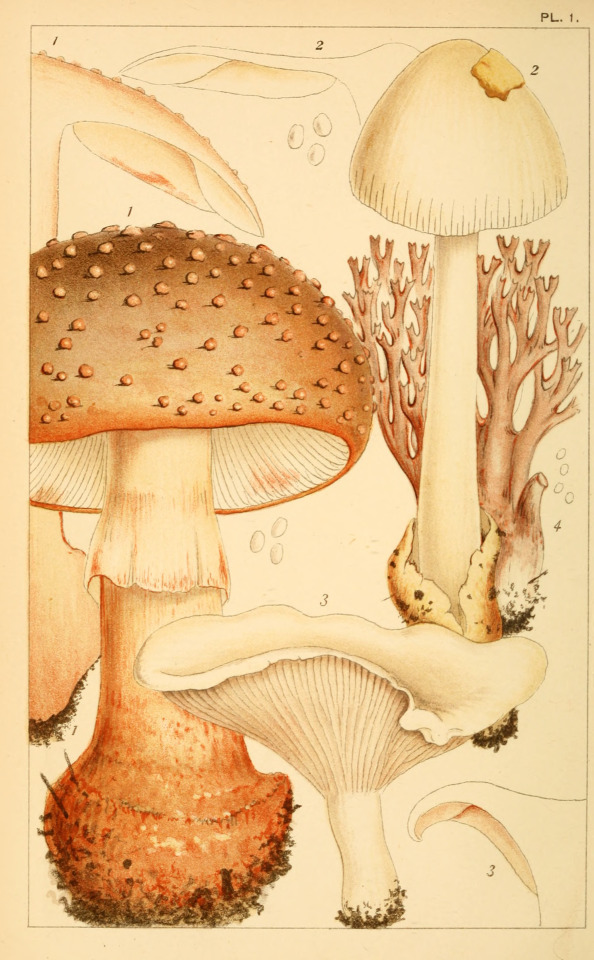
British edible fungi : how to distinguish and how to cook them. 1891. Frontispiece.
Internet Archive
#mushrooms#fungi#frontispiece#botany#science illustration#edible mushrooms#nemfrog#1891#19th century
610 notes
·
View notes
Text

Cerioporus squamosus
“The mushroom Polyporus squamosus Huds. ex Fr. Photographed in Kinderhook Trail, Wayne National Forest, Ohio, USA. Notes: ‘On standing dead elm.’” - via Wikimedia Commons
#cerioporus squamosus#polyporus squamosus#wikipedia#wikipedia pictures#nature#mushroom#mushroomcore#mushrooms#edible mushrooms#edible fungi#dryad’s saddle#pheasant’s back mushroom#mycology#basidiomycota#basidiomycetes#bracket fungi#agaricomycetes#polyporales#polyporeceae
76 notes
·
View notes
Text










Ringless honey mushroom 》 Armillaria tabescens
A historic day! My first time harvesting mushrooms with the intent to consume!
I've gotten to know the fungi in this park well, and there are at least two armillaria that have been sprouting honey mushroom in two particular spots for a couple of autumns now. I felt familiar enough with them to partake and they were very gracious in allowing me to do so.
For my first time eating wild foraged mushrooms, I pan fried them with red onion and added them to some pierogi. Delicious!
Southeast Texas, 6 Oct. 2024
#amatuer mycology#mushroom hunting#mushrooms#mycology#fungi#mushrooms of texas#texas mushrooms#fungi of texas#wild fungi#fungarium#mushroom foraging#foraging#wild mushrooms#edible mushrooms#mushroom#mushroom identification#mushroom species#species identification#fungi identification#honey mushrooms#armillaria#rot#decay#special interest#goblincore#naturecore#mushroomcore#harvest#autumn mushrooms
26 notes
·
View notes
Text
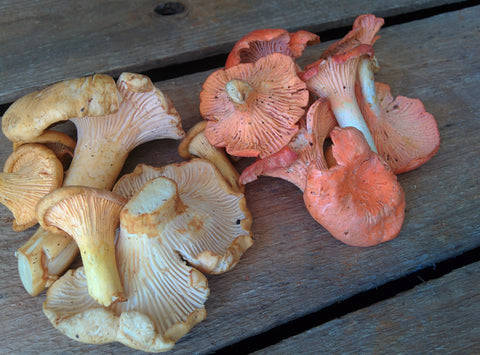

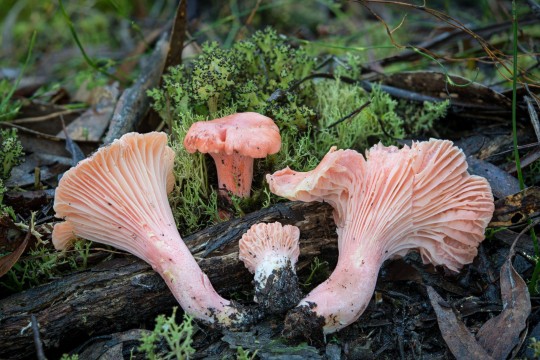
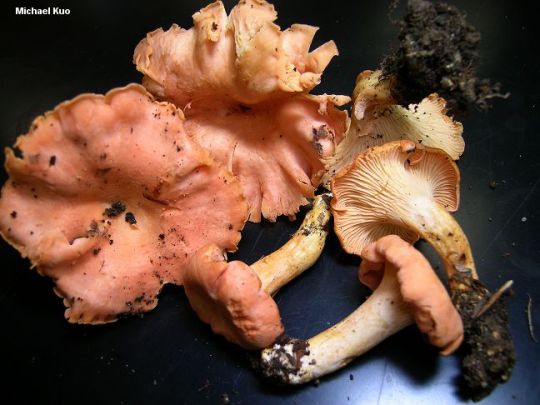
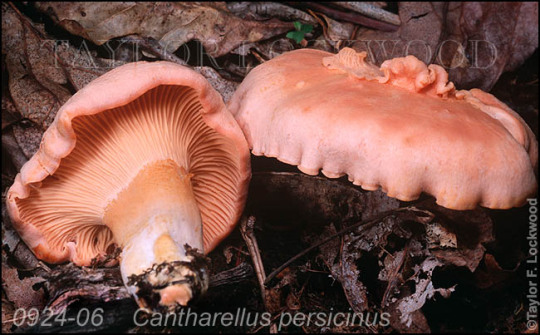
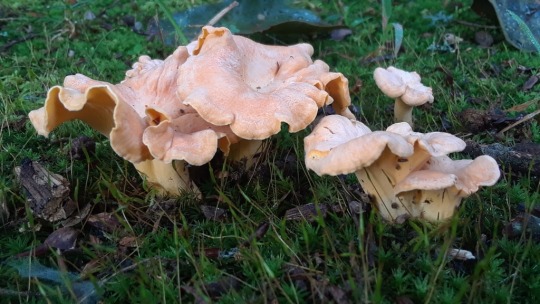
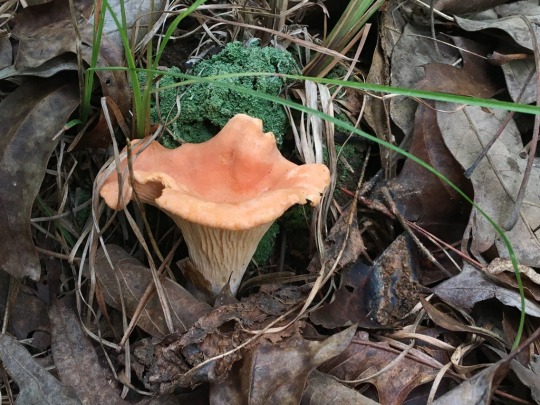
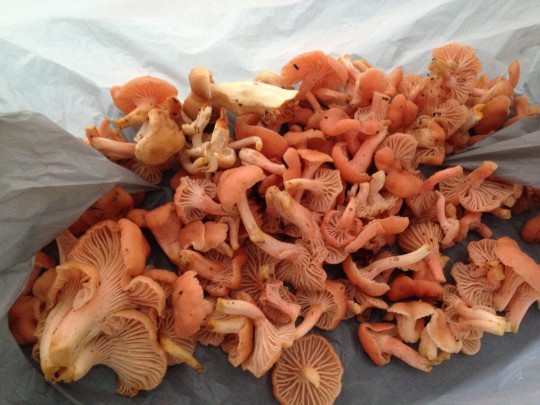
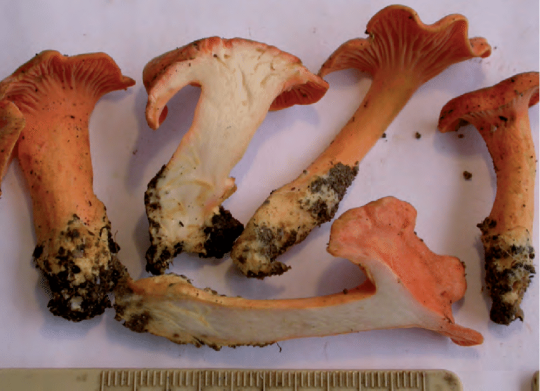
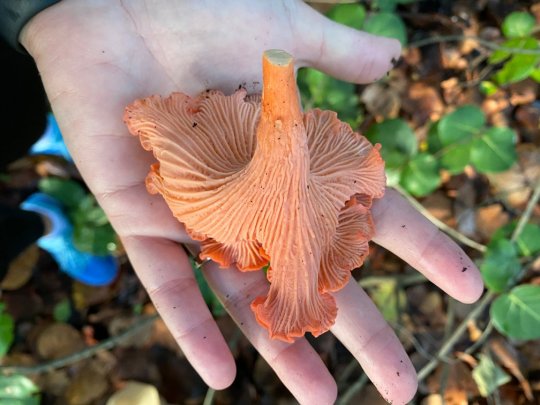
cantherellus persinicus (peach or pink chanterelle), common in Appalachian U.S. 🩷
#mushroom#pink chanterelle#peach chanterelle#cantharellus persicinus#foraging#forage#foragecore#edible#edible mushrooms#choice mushrooms#appalachia#appalachian mountains#chanterelle#delicious#nature#naturecore#pink#peach#pretty#unusual
317 notes
·
View notes